Download Untitled - Wincomm Corporation
Transcript
Acknowledgments Greeting & Setup Thank you for purchasing the WMS-55PLUS2E unit. We wish that this unit will be durable and reliable in providing your needs. Please follow the instructions below to ensure the unit continues to have high performance. Please read the user’s manual carefully before performing the installation. Please use the power cord designated for the product. When an extension cord is required, use one with the correct power rating. The cord must be grounded and the grounding feature must not be defeated. The product should be installed on a flat surface to avoid tipping. Space should be maintained between the back of the product and the wall for proper ventilation. Unpacking After opening the carton, there will be a unit with an accessory box and 2 stands (options). Examine the contents to see if there are damages to the unit and if all accessories are present. Setting up Please read this manual carefully and remember to keep this manual for future reference. Safety Instructions & Cleaning The unit has undergone various tests in order to comply with safety standards. Inappropriate use may be dangerous. Please remember to follow the instructions below to insure your safety during the installation and operating process. Transporting & Placement of unit 1. When moving the unit on a cart; be very cautious. Quick stops, excessive forces and uneven surfaces may cause the cart to overturn thus risking the unit to fall to the ground. 2. If the Monitor display unit does fall to the ground, immediately turn the power off and disconnect cords. Then contact a service technician for repairs. Continual use of the unit may result cause a fire or electric shock. Also, do not repair the unit on your own. 3. Having two or more people transporting the display unit is recommended. In addition, when installing the open frame by suspending it also requires two or more people. 4. Before suspending the unit, make sure the material used for suspension is sturdy and stable. If not properly suspended, the display unit may fall and cause serious injury to people standing nearby as well as to the unit itself. 5. If you wish to mount the display unit, remember to use only the mounting hardware recommended by the manufacturer. Electrical and Power Source Related 1. This Monitor display unit must operate on a power source as shown on the specification label. If you are not sure what type of power supply used in the area, consult your dealer or local power supplier. 2. The power cords must not be damaged. Applied pressure, added heat, and tugging may damage the power cord. 3. The power cord must be routed properly when setup takes place. We advise that this aspect measure is to prevent people from stepping on the cords or while the unit is suspended to prevent flying objects from getting tangled with the unit. 4. Do not overload the AC outlets or extension cords. Electrical shocks or fires may occur from overloading. 5. Do not touch the power source during a thunderstorm. 6. If your hands are wet, do not touch the plug. 7. Use your thumb and index finger, grip firmly on the power cord to disconnect from the electrical socket. By pulling the power cord, may result in damaging it. 8. If the unit is not going to be in use for an extended period of time, remember to disconnect the unit. 9. Connect the unit to a power source with the same numerical value as spec. label shown. Please use only the power cord provided by the dealer to ensure safety and EMC compliance. Various Factors of Environment 1. Do not insert objects into the openings. 2. Do not have liquids seep into the internal areas of the Monitor display unit. 3. Having liquids seep in or inserting objects into the unit may result in electric shocks from taking and/or short circuiting the internal parts. ~ 2 ~ 4. 5. 6. 7. 8. 9. Do not place the Monitor display unit in the presence of high moisture areas. Do not install the Monitor display unit in a wet environment. Do not place near unit near heat generating sources. Do not place the unit in a location where it will come in contact with fumes or steam. Remember to keep the Monitor display unit away from the presence of dust. If water has flow in or seep in, immediately disconnect the open frame unit. Then contact a service technician for repairs. Ventilation Spacing 1. Do not cover or block the openings on the top and back sides of the display unit. Inadequate ventilation may cause overheating thus reducing the lifespan of the unit. 2. Unless proper ventilation is present, do not place unit in an enclosed area; such as a built-in shelf. Keep a minimum distance of 10 cm between the display unit and wall. Cleaning the unit (1) Remember to turn off the power source and to unplug the cord from the outlet before cleaning the unit. (2) Carefully dismount the unit or bring the unit down from suspension to clean. (3) Use only a dry soft cloth or clean room wiper when cleaning the LCD panel or touch screen surface. Use a soft cloth moistened with mild detergent to clean the display housing. (4) Remember to avoid having liquids seep into the internal components. Servicing, Repairing, Maintenance & Safety Checks 1. If the unit is not functioning properly, observe the performance level of the display closely to determine what type of servicing is needed. 2. Do not attempt to repair the Monitor display unit on your own. Disassembling the cover exposes users’ to high voltages and other dangerous conditions. Notify and request a qualified service technician for servicing the unit. 3. If any of the following situations occur turn the power source off and unplug the unit. Then contact a qualified service technician (a) A liquid was spilled on the unit or objects have fallen into the unit. (b) The unit is soaked with liquids. (c) The unit is dropped or damaged. (d) If smoke or strange odor is flowing out of the open frame unit. (e) If the power cord or plug is damaged. (f) When the functions of the unit are dysfunctional. 4. When part replacement is needed. Make sure service technician uses replacement parts specified by the manufacturer, or those with the same characteristics and performance as the original parts. If unauthorized parts are used it may result in starting a fire, electrical shock and/or other dangers. Battery Installation Follow below instructions and notice the caution for replacing and disposing of the RTC Lithium battery CR2032 for safety consideration. CAUTION: There is danger of explosion, if battery is incorrectly replaced. Replace only with the same or equivalent type recommended by the manufacturer. Dispose of used batteries according to the manufacturer’s instruction. The specification is subject to change without notice. ~ 3 ~ Version Change History Date Version Description 2010/12/20 1.0 Remark First release ~ 4 ~ CONTENTS Product Description .........................................................................................6 Package Contents .............................................................................................................. 6 Specification ..................................................................................................................... 6 Installation ....................................................................................................6 Dimension Drawing .......................................................................................33 System view and System Installation ............................................................... 35 Front View ...................................................................................................................... 35 Side View ....................................................................................................................... 36 Bottom View ................................................................................................................... 37 Rear View....................................................................................................................... 37 Visual inspection to ensure computer module connector is fully docking .................................. 38 System Software Installation............................................................................................. 40 Installing the Drivers ....................................................................................................... 40 Dual touch by IR TOUCH (USB interface), optional ............................................................... 40 Notice ............................................................................................................................ 40 Remote Controller .........................................................................................41 Functions ....................................................................................................................... 41 a. Turn on/off LCD display ................................................................................................ 41 b. Select display video signal source .................................................................................. 41 c. Synchronize video input signal and AD board output signal ................................................ 41 d. Adjust display setting ................................................................................................... 41 Navigating the OSD Menu .............................................................................. 42 a. Display OSD main menu ............................................................................................... 42 b. Select the menu you want to adjust ............................................................................... 42 c. Adjust the setting ........................................................................................................ 42 d. Exit the OSD menu ...................................................................................................... 42 Color/bright .................................................................................................................... 43 Image setting ................................................................................................................. 45 OSD menu ..................................................................................................................... 46 Signal Source ................................................................................................................. 46 Special........................................................................................................................... 47 Summary ....................................................................................................................... 47 Trouble Shooting...........................................................................................48 BIOS Setup ..................................................................................................49 Block diagram ..............................................................................................62 Jumper & Connector Definition ........................................................................ 63 ~ 5 ~ Product Description The WMS-55PLUS2E is composed of TFT LCD panel display and industrial level computer. It is designed to meet the demanding performance requirements of today’s business, public display and industrial applications. It is ideal for applications such as • KIOSK • Retail and restaurants • Corporate communication • Public signage • Casino & gaming signage • Medical information • Financial centers & banks • Government & military • Education • Entertainment venues • Sports arenas • Public transportation signage • Advertisements LCD display applications. Open-frame series are available for system builder or integrators for the environment that has been decorated. Package Contents Before using this WMS-55PLUS2E unit, please make sure that all the items listed below are present in your package 1. WMS-55PLUS2E unit 2. Power Cable x 1 3. Remote controller x 1 4. CD title (drivers, user’s manual) x 1 5. Accessories of option parts 6. Screws for stands (M4xL10) x 8 7. Screws for VESA mount (M8xL12) x 9 If you find that any item to be missing or appear to be damaged, contact your dealer immediately. DO NOT throw away the packing material or shipping carton in case you need to ship or store the LCD monitor in the future. Specification System CPU Intel socket 775 C2D CPU, max speed: 2.66G, max power consumption 65W CPU list: CORE 2 DUO 2.66G E6700 CORE 2 DUO 2.6G E4700 CORE 2 DUO 2.4G E6600 CORE 2 DUO 2.13G E6400 CORE 2 DUO 1.8G E4300 Celeron 800MHz 440 FSB 1066MHz / 800MHz / 533MHz Chipset Intel® Q965 chipset: •North bridge: Intel Q965 Graphic Memory Controller Hub (GMCH) (25W) •South bridge: Intel ICH8 I/O Controller Hub (5W) VGA Intel Q965 integrated graphic subsystem (GMA3000) Audio Realtek ALC268 AC97 Audio Codec 2+2 channels LAN Realtek 8111B 10/100/1000 Mbps LAN x 2 Memory Two 240-pin DDRII 533/667/800 DIMM sockets, dual channels, supports max. 4 GB system memory I/O Intel ICH8 I/O controller Hub Serial ATA SATA II, Data transfer rates up to 3.0 Gb/s (300 MB/s), 2 on mother board, 2 on connection board Serial port RS232 x 1 / RS232,422,485 x 1 Parallel port Compatible with IBM parallel port x 1 Support Enhanced Parallel Port(EPP) – Compatible with IEEE 1284 specification ~ 6 ~ IEEE1394a USB DVI VGA GPIO WDT Support Extended Capabilities Port(ECP) – Compatible with IEEE 1284 specification firewire port x 1 (design in, option, supports provisions of IEEE 1394-1995 Standard for High Performance Serial Bus 1.0 and 1394a-2000) USB 2.0 x 8 (external x 4 on mother board, internal x 4 on connection board) On DVI board, DVI-D port x 2 (one link with AD board, one to computer I/O side) On connection board, VGA out x 1 Support 8 General Purpose Input (GPI), TTL level Support 8 General Purpose Output (GPO), TTL level 5V internal pin heads on mother board External connector on computer module (option) 1~252 minutes, software programmable BIOS Brand: Award Flash ROM size: 8M Support RTC wakeup /Wake on LAN /auto power on after power failure/PnP/ACPI/Smart fan control Display LCD module Model CMO V546H1-LH4 V546H1-LH4 Resolution (pixel) Full HD (1920 x 1080) Active Area (mm) 1209.6x680.4 Pixel Pitch (mm) 0.63 Display Mode 16:9 Number of Colors 10bit (1.07G) View Angle (H/V) 178 / 178 Brightness (cd/m², nit) 500 Contrast Ratio 4000:1 Response Time (ms) 4.5 (Gray to Gray) Power Consumption (W) 160 Interface 2ch LVDS Supply Voltage (V) 12 Backlight Outline Dimensions (mm) 10 CCFL 1267.6x728.4x61.6 Weight (g) 19500 Life time (Hrs) 50,000 hours Touch single touch, option IRTOUCH L55D00H-01 Model name L55D00H-01 Type Infrared rays Glove Yes Stylus Yes Vandal No Interface USB Light Transmission Hardness >=92% Glass hardness – Mohs 7 Glass thickness 3mm ~ 7 ~ Linearity 1.5mm Active area (mmxmm) 938x531 Resolution 1212.6 x 683.4 Lifetime 7 years Graphic Resolution Support Mode List OS: Microsoft Windows® XP Pro, XP embedded, Windows 7 VGA for VESA Standard Timing No. Resolution fV (Hz) fH (KHz) Pixel Rate (MHz) 1 800x600 60 37.9 40.000 2 1024x768 60 48.4 65.000 3 1280x720 60 44.8 74.500 4 1280x768 60 47.4 68.250 5 1280x1024 60 64.0 108.000 6 1360x768 60 47.7 85.500 7 1366x768 60 47.7 85.500 8 1920x1080 60 67.2 173.000 Digital source Storage HDD No. Resolution fV (Hz) 1 800x600 60 37.9 40.000 2 1024x768 60 48.4 65.000 3 1152x864 60 53.7 81.675 4 1280x720 60 44.8 74.500 5 1280x768 60 47.4 68.250 6 1280x960 60 60.0 108.000 7 1280x1024 60 64.0 108.000 8 1360x768 60 47.7 85.500 9 1366x768 60 47.7 85.500 10 1920x1080 60 67.0 148.500 fH (KHz) Pixel Rate (MHz) 3.5” SATAII HDD drive bay x 1, Max storage size: 1TB With tray for easy replacement Expansion slots PCIe mini card PCIe x 16 PCIe x1 Single 52-pin card-edge type, x1 Compatible to the PCI Express* Base Specification revision 1.1a x1 Compatible to the PCI Express* Base Specification revision 1.1a x1 External I/O on computer side USB USB 2.0 x 4 COM RS232 x 1 LAN RJ-45 x 2 (Gigabit Ethernet) KB/Mouse PS/2 Keyboard x1 & Mouse x 1 Audio Line-in, Mic-in, Line out audio jacks DVI-D output x 1 IEEE1394a Fire wire *1 (option) ~ 8 ~ GPIO connector 8 in 8 out (option) External I/O on bottom VGA input x 1 VGA output x 1 (loop signal output with VGA input) HDMI input x 1 (design in option) Any door to access internal DVI-D input x 1 Power Power input Direct AC connector, ATX power supply to computer board, 100~240VAC, 50/60Hz, TBD A Power consumption and Ampere Display only: TBD W, TBD A With computer module: TBD W, TBD A Power switch IEC320 type, at AD board I/O side, x1 Reset switch Huafeng Electronic HF606, at computer I/O side, x1 LED status indicator Power and HDD indicator at computer board external I/O side (LED colors: Power: Green / Orange: HDD accessing) Mechanical & Environmental Mainbody Operating Temperature: Storage Temperature Operating Humidity Storage Humidity Noise Level Kensington lock hole SECC, black (Panton no. 8238) 0˚C ~ 40˚C -20˚C ~ 60˚C 10 ~ 90% 10 ~ 90% Full loading 38 dB Computer module I/O side x 1, HDD tray x1 Dimensions and Weights WMS-55PLUS2E BK WMS-55PLUS2E BKIT Weight (without stand) Kg 51.3 61.2 Weight (with stand) Kg 53.3 63.2 Dimensions (without stand) mm (W) x mm (H) x mm (D) 1336x807x145 1336x807x162 Dimensions (with stand) mm (W) x mm (H) x mm (D) 1336x820x145 1336x820x162 Weight (without stand) Kg 56.3 66.2 Weight (with stand) Kg 58.3 68.2 1495X915X315 1495X915X315 Packing Carton dimension mm (W) x mm (H) x mm (D) Options: 1. TV tuner function & Video capture function: COMPRO E300F and E600F, PCI-E x1 card 2. Wireless LAN function: by VIA VNT6656GEV00 PCI-E 802.11 b/g 54M mini card 3. VGA card function: by TUL ATI HD 4650 4. Stand x2 5. Bottom I/O cover 6. Side I/O cover 7. Web camera (1.3M pixels, RICOH RY5U870-SOO1B-01A) 8. Speakers (5W+5W) (landscape, portrait, Natural melody speaker unit, B0-0018-I-09E-GP 40mm 4ohm) 9. Wall mount bracket (200 x 200 mm x mm) ~ 9 ~ 10. Magnetic stripe card reader (UIC MSR210U-33 MSR module) Accessories: 1. Power Cable x 1 2. Remote controller x 1 3. CD title x 1 4. Screws x 8 (M4xL10, for stands) 5. Screws for VESA mount (M8xL12) x 9 6. Accessories of option parts Regulatory: FCC-A, CE (EMC/LVD), VCCI, UL/cUL, CCC Shock/Vibration/Drop Shock Non-Operating: 15G/0.53 oz, 11 ms, half sine wave Vibration Non-operation 5~22HZ : 0.25G 22~350HZ: 2G 350~500HZ : 1G CYCLE TIME: 1 MINUTE DIRECTION: X,Y,Z (one direction TIME is 10 MINUTES) Drop Drop Times Drop Point 1 Corner in contact with the bottom, left and front side 2-3-5 1 2 Edge where the bottom and right side are in contact with each other 3-6 1 3 Edge where the front and the bottom side are in contact with each other 2-3 1 4 Bottom side 3 1 5 Front side 2 1 6 Right side 6 1 7 Left side 5 1 ~ 10 ~ 8 Rear side 4 1 9 Top side (Less than 30kg only) 1 1 Drop Height: PACKING WEIGHT [kg] Less than 10 10 or over 20 or over 30 or over 40 or over 50 or over 60 or over 100 or over BOTTOM SURFACE [cm] 60 55 50 45 40 35 30 30 LEFT and RIGHT SURFACE [cm] 40 35 30 25 20 15 15 No Need OTHER POINT [cm] 50 45 40 35 30 25 20 No Need Configurations: 1. WMS-55PLUS2EBK(bezel + black body)-C2D2.6G CPU-1G RAM-160G HDD 2. WMS-55PLUS2EBKIT(bezel + black body + IR touch)-C2D2.6G CPU-1G RAM-160G HDD ~ 11 ~ Installation The procedures for setting up your WMS-55PLUS2E are as follows: Power & Signal Connections 1. Power cable connection: Connect the power cord to the AC outlet. 2. Signal cable connection: The LCD public display is designed to work with second video sources. Due to possible deviations between these video sources, you may have to make some adjustment to the monitor settings when switching between these sources. These adjustments are made from the OSD menu. This figure shows the signal connectors of the AD board to integrated computer. RS232 VGA2 in DVI-D in VGA1 in VGA1 out 3. Power on: a. Switch on the power of your monitor (switch is located near connector of power cord) b. Switch on the power of integrated computer. 4. Power off: a. Switch off the power of integrated computer (at the I/O port). b. Switch off the power of your monitor (switch is located near connector of power cord) 5. Mount or Dismount stands: a. Place the monitor face down on the stable and flat platform. b. Mount stands on: - Insert stand into the stand holes. - Use screw driver and M4xL10 screws in accessory box to fasten stands on WMS-55PLUS2E Dismount stands: - Use screw drivers to unscrew the M4xL10 screws from stand frame - Store the screws in proper place for next usage ~ 12 ~ M4 X L10 screws 6. Wireless module set installation: a. Unfasten screw on PC module and pull out PC module b. Unfasten the screw on DVI-D cable c. Fix the antenna Remove the nut on antenna. ~ 13 ~ Fix antenna on I/O bracket d. Install Wireless LAN module e. Fix Wireless LAN module ~ 14 ~ f. Install antenna to Wireless LAN module (main connector) g. Add tape to fix antenna h. Install PC module back and fasten the DVI-D cable i. Fasten the screw on PC module. j. Done ~ 15 ~ 7. Wall-mounted Installation a. Unplug all the cables and cords from WMS-55PLUS2E. b. Place WMS-55PLUS2E face down on a soft and flat surface (blanket, foam, cloth, etc) to prevent any damage to the display. c. Unscrews, and then gently pull the stand away from WMS-55PLUS2E. d. Now, the display can fit securely to a mount (sold separately) by utilizing the mounting holes in the center of the back panel of the display (see Figure 5). ~ 16 ~ ~ 17 ~ ~ 18 ~ ~ 19 ~ 8. Setup Extend or Clone mode display with DVI port a. Please prepare one DVI cable b. Connect one side of DVI to the DVI port of PC module c. Connect the other side of DVI cable to DVI input of another monitor. d. Use Intel utility or ATI utility to Change display mode ATI Utility ATI- Extend mode ~ 20 ~ ATI-Clone mode Intel Utility ~ 21 ~ Intel –Extend mode Intel –Clone Mode ~ 22 ~ 9. How to use VGA to connect more monitor like a chain a. You need to prepare one standard VGA cable and one extend VGA cable Standard b. Remove Rear cover of WMS-55 c. Connect Standard VGA cable to Connection board Extend d. Open the door at bottom side and make VGA cable through the door. e. Connect another side of VGA cable to VGA 1 input connector. ~ 23 ~ f. Connect Extend VGA cable to VGA1 output, connect another side of VGA Cable to other Monitor VGA 1 input g. If you need to connect the third monitor, you just need to prepare another extend VGA cable and plug one side in VGA out the other side in the third monitor‘s VGA 1 Input. 10. How to use TV tuner card a. Release screws on PC module and pull out PC module b. Release the screws on DVI cable c. Release the screw on DVI card bracket and remove DVI card ~ 24 ~ d. Remove the bracket on PC Module(I/O side) e. Install TV card ~ 25 ~ f. Install DVI card and cable back g. Install PC module back to monitor , connect DVI cable and push PC module back to Monitor h. Fasten the screws on PC module ~ 26 ~ 11. Procedures to replace hard drive a. Switch off power b. Unplug AC power Cord c. Unscrew 2 screws of HDD tray and pull out the HDD tray. (from bottom view) (from bottom view) d. Unplug the SATA cable ~ 27 ~ e. Unscrew 3 screws of HDD to separate HDD and HDD tray. (from bottom view) (from bottom view) f. Reverse procedures to install new HDD 12. Landscape speaker installation a. Install speaker frames (yellow in picture) by using the same screws on main chassis b. Result, refer to below picture ~ 28 ~ c. fix speaker unit on frames by 4 screws d. connect speaker lines 13. Portrait speaker set installation: a. Place WMS-55PLUS2 face down on flat table b. Unscrew 2 screws on the side ~ 29 ~ c. By using the unscrewed screws to fix bracket at sides d. install speaker unit, by using 6 screws enclosed in speaker carton to fix speaker unit e. Connect cables (there are two cables, one for left side, one for right side) 15. MSR installation a. Packing list: (from left to right) ~ 30 ~ - Mount bracket MSR module Screw x 3 (M3XL6) CD title (MSR user’s manual and set up AP. CD printing may be changed) b. Unscrew 2 screws at WMS-55PLUS2 right bottom side (keep 2 screws well) c. Pass MSR USB cable through mount bracket hole (in the middle); screw back the 2 original screws. d. By using supplied 3 (M3XL6) screws to fix MSR module on mount bracket ~ 31 ~ e. MSR module is fixed beside WMS-55PLUS2 side f. Connect USB cable; install MSR setting AP (in CD title) in OS. g. Take care the the magnetic card direction and face to swap ~ 32 ~ Dimension Drawing WMS-55 PLUS2E BK: ~ 33 ~ WMS-55 PLUS2E BKIT (IR single touch): ~ 34 ~ System view and System Installation Front View Color definition of front LED: Green: monitor power ON, Red: monitor power OFF Web camera Landscape Speaker Figure 1 ~ 35 ~ Side View Color definition of computer power LED: Green: ON, No: OFF Color definition of HDD LED: Orange: access, No: no action Figure 2 Figure 3 ~ 36 ~ Bottom View Audio output for speaker Left side and Right side Figure 4 Rear View Figure 5 ~ 37 ~ Visual inspection to ensure computer module connector is fully docking a. From rear cover See through ventilation holes to inspect connector connection b. from HDD tray hole Withdraw HDD tray to inspect connector connection ~ 38 ~ I/O covers a. computer IO cover b. AD board IO cover ~ 39 ~ System Software Installation Recent releases of operating systems from major vendors include setup programs, which load automatically and guide you through hard disk preparation and operating system installation. The guidelines below will help you determine the steps necessary to install your operating system on the WMS-55PLUS2E hard drive. NOTE: Some distributors and system integrators may have already pre-installed system software prior to shipment of your WMS-55PLUS2E. Installing software requires an installed HDD. Software can be loaded in the WMS-55PLUS2E using any of below methods: Method 1: Use the Ethernet You can use the Ethernet port to download software from the Net to the HDD that has been preinstalled in WMS-55PLUS2E. Method 2: Use a External CD-ROM You can use the external CD-ROM to transmit the software to the HDD that has been pre-installed in the WMS-55PLUS2E. In order to boot up system from USB-CD/DVD drive, please connect USB-CD/DVD drive, turn on computer power, keep on pressing “F11” key, go into BIOS quick boot menu, select “USB-CD ROM”, WAIT FOR 20 SECONDS, then press enter, system OS will boot up from USB-CD/DVD drive directly. Installing the Drivers After installing your system software, you will be able to set up the LAN, VGA, Audio and USB functions. All drivers are stored in a CD disc, which can be found in your accessory pack. The various drivers and utilities in the disc have their own text files that help users install the drivers and understand their functions. Dual touch by IR TOUCH (USB interface), optional 1. Support Windows 7 dual touch gesture definition 2. In XP and Vista platform, AP developer can use SDK to develop own AP which can work as singletouch and dual-touch 3. Please find SDK in CD title Notice 1. 2. 3. 4. 5. 6. Unplug AC power cables and loose screws before withdrawing mother board tray. Insert and withdraw mother board gently to avoid mother board try fallen and connector board damaged. Fix screws after mother board tray inserted and connected firmly. Use Kensington lock to secure PC kits. Hand grips are detachable; please keep it in safety place for future usage. For best picture quality, please set display resolution to 1920x1080. ~ 40 ~ Remote Controller The outlook of remote controller is shown as below. Functions a. Turn on/off LCD display Press the POWER button to turn on/off display. b. Select display video signal source Press the DVI, VGA1, VGA2 to select display video input source (DVI and VGA1 input connectors are at the bottom side, VGA2 input connector is enclosed within chassis). c. Synchronize video input signal and AD board output signal Press the AUTO button to synchronize video input signal and AD board output signal to have the best LCD display quality. d. Adjust display setting Press MENU, EXIT, ENTER, ▲,▼, ◄, ► buttons to adjust display effects in OSD (on screen display). IMPORTANT: in WMS-55/46/55PLUS2E series products, VOLUME is not adjustable by remote controller. The VOLUME controller buttons on remote controller is reserved for WMS-55/46/55PLUS3 series. These 3 buttons are reserved for WMS-PLUS3 series only No function in WMS-PLUS2E series ~ 41 ~ Navigating the OSD Menu a. Display OSD main menu Press the MENU button to display the main menu on the screen. b. Select the menu you want to adjust Press the (▲/▼) buttons to shift the item selections up or down until it is desired, and then press the ENTER button to enter the sub-menu item. c. Adjust the setting Press the ENTER button to enter the sub-menu and press the ◄ or ► button to adjust the value of setting. Once you adjust the value of setting, the value will be stored automatically. d. Exit the OSD menu To return the regular screen viewing, press the EXIT button can close sub-menu one by one. If there is no command respond for 10 seconds (default, can be changed in OSD), OSD menu will be closed automatically. ~ 42 ~ Color/bright z Contrast: Use to adjust the screen’s contrast, press "►" to increase or "◄" to decrease setting. z Brightness: Use to adjust the screen’s LCD display brightness, press "►" to increase or "◄" to decrease setting. Please be reminded if auto brightness is ON, brightness cannot be adjusted manually. If you want to turn on/off auto brightness, please go to Auto Brightness item to change setting. z Color Adjust: Use to adjust the screen’s color level, press Enter to choose color (Red or Green or Blue) you want to change, press "►" to increase or "◄" to decrease setting. Please be reminded ~ 43 ~ only Color Temp setting is “USER”, color level can be adjusted manually. Please go to Color Temp to set color temperature in “USER” mode before you adjust color level. z Color Temp: By pressing Enter, "►" or "◄" You can select the screen’s color level of the white color field from the default color temperature settings. 9300K: Use to set value of monitor for the CIE coordinate 9300 color temperature (default) 6500K: Use to set value of monitor for the CIE coordinate 6500 color temperature 7500K: Use to set value of monitor for the CIE coordinate 7500 color temperature sRGB: Standard RGB color space created by Microsoft and HP USER: USE to set your desirable color level. z Auto Brightness: By enabling this function, LCD brightness level be automatically changed by referring to ambient lightness. The brighter ambient brightness the brighter LCD display display will be, the darker ambient brightness, the darker LCD brightness will be. There are 10 ranges of auto brightness between 50%~100% of original panel maximum brightness. If the function is enabling, the brightness will be adjusted automatically after 10 seconds when the ambient light changed. ~ 44 ~ Image setting Clock: Use to adjust VGA input signal ADC PLL value Phase: Use to check the VGA input signal phase Sharpness: Use to adjust the screen’s sharpness by pressing "►" or "◄" H. Position: Use to adjust the VGA signal input image to the left or right on the screen by pressing "►" or "◄" z V. Position: Use to adjust the VGA singal input image to the up or down on the screen by pressing "►" or "◄" z z z z ~ 45 ~ OSD menu You can set up the OSD situation z OSD H. Pos: Use to adjust the OSD menu to the left or right on the screen by pressing "►" or "◄" z OSD V. Pos: Use to adjust the OSD menu to the up or down on the screen by pressing "►" or "◄" z OSD Timer: Setup the timeout of OSD while didn’t input change by pressing "►" or "◄" The default setting is 25 and the timeout time is 10 seconds If setting is 0, there will be no timeout time, OSD will be always shown on screen If the setting is 100, the timeout time is 30 seconds. z Language: Select language of OSD display by press the (▲/▼) buttons Signal Source You can select the video input signal source by press the (▲/▼) buttons z D-SUB1: VGA signal input from VGA input connector at display bottom side z D-SUB2: VGA signal input from VGA input connector enclosed within chassis z DVI: DVI signal input from DVI input connector at display bottom side. ~ 46 ~ Special You can make OSD setting to be default or synchronize video input signals with AD board output signals. z Reset: To set OSD settings to be default values z Auto: To synchronize video input signals with AD board output signals to have the best LCD display quality Summary Color/Bright z z z z z Contrast (default 50) Brightness (default 100) Color adjust (default 50) Color temp (default 9300) Auto Brightness (default ON) Image setting z Clock (for VGA input only, default 50) z Phase (for VGA input only, default 50) z Sharpness z H position (for VGA input only, default 50) z V position (for VGA input only, OSD menu z z z z OSD OSD OSD OSD H position V position timer (default 25) language (default English) Special z Reset z Auto Signal source ~ 47 ~ default 50) z D-sub1 z D-sub2 z DVI Trouble Shooting If your monitor fails to operate correctly, consult the following chart for possible solution before calling for repairs: Condition Check Point 1. The picture does not appear z Check if the signal cable is firmly seated in the socket. z Check if the Power is ON at the computer z Check if the brightness control is at the appropriate position, not at the minimum. z State the monitor is powered on and the LED of power is GREEN, plug out the VGA cable and plug in again. z Check if computer is turned on 2. The screen is not z Check if the signal cable is firmly seated in the socket. synchronized z Check if the output level matches the input level of your computer. z Make sure the signal timings of the computer system are within the specification of the monitor. z If your computer was working with a CRT monitor, you should check the current signal timing and turn off your computer before you connect the VGA Cable to this monitor. z Use the “AUTO” key on remote control to automatically adjust the display timing scan. 3. The position of the screen is z Adjust the H-position, and V-position, or perform the AUTO not in the center adjustment. 4. The screen is too bright (too z Check if the brightness or contrast control is at the appropriate dark) position, not at the Maximum (Minimum). 5. The screen is shaking or z Press the “AUTO” - adjustment control by remote control or waving OSD to adjust. Moving all objects which emit a magnetic field such as motor or transformer, away from the monitor. Check if the specific voltage is applied. z Check if the signal timing of the computer system (or engine box) is within the specification of monitor. 6. No external sound 1. Power on WMS-55PLUS2E 2. Connect external speakers to lineout port 3. Set audio output to Realtek a. Click “Start button” b. Click “control panel”, c. Click “sounds and audio devices” d. choose “Audio” sheet, check “Sound playback”, set “Default device” to be “Realtek HD audio output” 4. Volume control a. click “Realtek HD audio manager” icon (at right bottom side) b. choose “Devices and Mixer” sheet c. The main volume can be adjusted by rotating the Playback switch 5. IMPORTANT: in WMS-55/46/55PLUS2E series products, VOLUME is not adjustable by remote controller. The VOLUME controller buttons on remote controller is reserved for WMS55/46/55PLUS3 series. If you are unable to correct the fault by following this chart, stop using your monitor and contact your distributor or dealer for further assistance. ~ 48 ~ BIOS Setup BIOS Introduction The Award BIOS (Basic Input/Output System) installed in your computer system’s ROM supports Intel processors. The BIOS provides critical low-level support for a standard device such as disk drives, serial ports and parallel ports. It also adds virus and password protection as well as special support for detailed fine-tuning of the chipset controlling the entire system. BIOS Set up The Award BIOS provides a Setup utility program for specifying the system configurations and settings. The BIOS ROM of the system stores the Setup utility. When you turn on the computer, the Award BIOS is immediately activated. Pressing the <Del> key immediately allows you to enter the Setup utility. If you are a little bit late pressing the <Del> key, POST (Power On Self Test) will continue with its test routines, thus preventing you from invoking the Setup. If you still wish to enter Setup, restart the system by pressing the ”Reset” button or simultaneously pressing the <Ctrl>, <Alt> and <Delete> keys. You can also restart by turning the system Off and back On again. The following message will appear on the screen: Press <DEL> to Enter Setup In general, you press the arrow keys to highlight items, <Enter> to select, the <PgUp> and <PgDn> keys to change entries, <F1> for help and <Esc> to quit. When you enter the Setup utility, the Main Menu screen will appear on the screen. The Main Menu allows you to select from various setup functions and exit choices. Phoenix - Award BIOS CMOS Setup Utility Standard CMOS Features Advanced BIOS Features Advanced Chipset Features Integrated Peripherals Power Management Setup PnP/PCI Configurations PC Health Status Frequency/Voltage Control Load Fail-Safe Defaults Load Optimized Defaults Set Supervisor Password Set User Password Save & Exit Setup Exit Without Saving Ese : Quit F10 : Save & Exit Setup Ç È Æ Å : Select Item Time, Date, Hard Disk Type… The section below the setup items of the Main Menu displays the control keys for this menu. At the bottom of the Main Menu just below the control keys section, there is another section, which displays information on the currently highlighted item in the list. Note: If the system cannot boot after making and saving system changes with Setup, the Award BIOS supports an override to the CMOS settings that resets your system to its default. Warning: It is strongly recommended that you avoid making any changes to the chipset defaults. These defaults have been carefully chosen by both Award and your system manufacturer to provide the absolute maximum performance and reliability. Changing the defaults could cause the system to become unstable and crash in some cases. ~ 49 ~ Standard CMOS Features “Standard CMOS Features” choice allows you to record some basic hardware configurations in your computer system and set the system clock and error handling. If the motherboard is already installed in a working system, you will not need to select this option. You will need to run the Standard CMOS option, however, if you change your system hardware configurations, the onboard battery fails, or the configuration stored in the CMOS memory was lost or damaged. Phoenix - Award BIOS CMOS Setup Utility Standard CMOS Features Date (mm:dd:yy) Tue, Jan 1, 2008 Time (hh:mm:ss) 00 : 00 : 00 IDE Channel 0 Master None IDE Channel 0 Slave None IDE Channel 1 Master None Item Help Menu Level > Change the day, month, Year and century IDE Channel 1 Slave None IDE Channel 2 Master None IDE Channel 3 Master None Video [EGA/VGA] Halt On [All, But keyboard] Base Memory 640K Extended Memory 514048K Total Memory 515072K At the bottom of the menu are the control keys for use on this menu. If you need any help in each item field, you can press the <F1> key. It will display the relevant information to help you. The memory display at the lower right-hand side of the menu is read-only. It will adjust automatically according to the memory changed. The following describes each item of this menu. Date The date format is: Day : Month : Date : Year : Sun to Sat 1 to 12 1 to 31 1999 to 2099 To set the date, highlight the “Date” field and use the PageUp/ PageDown or +/- keys to set the current time. Time The time format is: Hour : 00 to 23 Minute : 00 to 59 Second : 00 to 59 To set the time, highlight the “Time” field and use the <PgUp>/ <PgDn> or +/- keys to set the current time. IDE Channel Master/Slave The onboard Serial ATA connectors provide Primary and Secondary channels for connecting up to four Serial ATA hard disks. Each channel can support up to two hard disks; the first is the “Master” and the second is the “Slave”. Press <Enter> to configure the hard disk. The selections include Auto, Manual, and None. Select ‘Manual’ to define the drive information manually. You will be asked to enter the following items. Capacity: Capacity/size of the hard disk drive Cylinder: Number of cylinders Head: Number of read/write heads Precomp: Write precompensation Landing Zone: Landing zone Sector: Number of sectors ~ 50 ~ The Access Mode selections are as follows: Large (for MS-DOS only) Auto Remarks: The main board supports 4 serial ATA ports and are represented in this setting as IDE Channel 2. Video This field selects the type of video display card installed in your system. You can choose the following video display cards: EGA/VGA For EGA, VGA, SEGA, SVGA or PGA monitor adapters. (default) CGA 40 Power up in 40 column mode. CGA 80 Power up in 80 column mode. MONO For Hercules or MDA adapters. Halt On This field determines whether or not the system will halt if an error is detected during power up. All errors Whenever the BIOS detect a non-fatal error, the system will stop and you will be prompted. No errors The system boot will not be halted for any error that may be detected. All, But Keyboard The system boot will not be halted for a keyboard error; it will stop for all other errors ~ 51 ~ Advanced BIOS Features This section allows you to configure and improve your system and allows you to set up some system features according to your preference. Phoenix - Award BIOS CMOS Setup Utility Advanced BIOS Features CPU Feature Hard Disk Boot Priority Virus Warning CPU L1 and L2 Cache CPU L3 Quick Power On Self Test First Boot Device Second Boot Device Third Boot Device Boot Other Device Boot Up NumLock Status Gate A20 Option Typematic Rate Setting Typematic Rate (Chars/Sec) Typematic Delay (Msec) Security Option APIC Mode MPS Version Control for OS OS Select For DRAM>64MB Report No FDD For WIN 95 Press Enter Press Enter Disabled Enabled Enabled Enabled USB-CDROM Hard Disk LAN Enabled On Fast Disabled 6 250 Setup Enabled 1.4 Non-OS2 Yes ITEM HELP Menu Level > CPU Feature Press Enter to configure the settings relevant to CPU Feature. Hard Disk Boot Priority With the field, there is the option to choose, aside from the hard disks connected, “Bootable add-in Cards” which refers to other external devices. Virus Warning If this option is enabled, an alarm message will be displayed when trying to write on the boot sector or on the partition table on the disk, which is typical of the virus. CPU L1 and L2 Cache Cache memory is additional memory that is much faster than conventional DRAM (system memory). CPUs from 486-type on up contain internal cache memory, and most, but not all, modern PCs have additional (external) cache memory. When the CPU requests data, the system transfers the requested data from the main DRAM into cache memory, for even faster access by the CPU. These items allow you to enable (speed up memory access) or disable the cache function. By default, these items are Enabled. CPU L3 Cache Enabled or Disabled Quick Power On Self Test When enabled, this field speeds up the Power On Self Test (POST) after the system is turned on. If it is set to Enabled, BIOS will skip some items. First/Second/Third Boot Device These fields determine the drive that the system searches first for an operating system. The options available include LS120, Hard Disk, CDROM, ZIP100, USB-Floppy, USB-ZIP, USB-CDROM, LAN and Disable. Boot Other Device These fields allow the system to search for an OS from other devices other than the ones selected in the First/Second/Third Boot Device. Boot Up NumLock Status This allows you to activate the NumLock function after you power up the system. Gate A20 Option This field allows you to select how Gate A20 is worked. Gate A20 is a device used to address memory above 1 MB. ~ 52 ~ Typematic Rate Setting When disabled, continually holding down a key on your keyboard will generate only one instance. When enabled, you can set the two typematic controls listed next. By default, this field is set to Disabled. Typematic Rate (Chars/Sec) When the typematic rate is enabled, the system registers repeated keystrokes speeds. Settings are from 6 to 30 characters per second. Typematic Delay (Msec) When the typematic rate is enabled, this item allows you to set the time interval for displaying the first and second characters. By default, this item is set to 250msec. Security Option This field allows you to limit access to the System and Setup. The default value is Setup. When you select System, the system prompts for the User Password every time you boot up. When you select Setup, the system always boots up and prompts for the Supervisor Password only when the Setup utility is called up. APIC Mode APIC stands for Advanced Programmable Interrupt Controller. The default setting is Enabled. MPS Version Control for OS This option is specifies the MPS (Multiprocessor Specification) version for your operating system. MPS version 1.4 added extended configuration tables to improve support for multiple PCI bus configurations and improve future expandability. The default setting is 1.4. OS Select for DRAM > 64MB This option allows the system to access greater than 64MB of DRAM memory when used with OS/2 that depends on certain BIOS calls to access memory. The default setting is Non-OS/2. Report No FDD For WIN 95 If you are using Windows 95/98 without a floppy disk drive, select Enabled to release IRQ6. This is required to pass Windows 95/98's SCT test. You should also disable the Onboard FDC Controller in the Integrated Peripherals screen when there's no floppy drive in the system. If you set this feature to Disabled, the BIOS will not report the missing floppy drive to Win95/98. ~ 53 ~ Advanced Chipset Features This Setup menu controls the configuration of the chipset. Phoenix - Award BIOS CMOS Setup Utility Advanced Chipset Features System BIOS Cacheable Memory Hole at 15M-16M Enabled Disabled ** VGA Setting ** PEG/On Chip VGA Control * PEG Force X1 On-Chip Frame Buffer Size DVMT Mode DVMT/FIXED memory Size Auto Disabled 8MB DVMT 128MB ITEM HELP System BIOS Cacheable The setting of Enabled allows caching of the system BIOS ROM at F000h-FFFFFh, resulting in better system performance. However, if any program writes to this memory area, a system error may result. Memory Hole At 15M-16M In order to improve performance, certain space in memory can be reserved for ISA cards. mapped into the memory space below 16 MB. The choices are Enabled and Disabled. VGA Setting The fields under the VGA Setting and their default settings are: PEG/On Chip VGA Control: Onchip VGA On-Chip Frame Buffer Size: 8MB DVMT Mode: DVMT DVMT/Fixed Memory Size: 128MB Boot Display: Auto Panel Scaling: Auto Panel Number: 4 ~ 54 ~ This memory must be Integrated Peripherals This section sets configurations for your hard disk and other integrated peripherals. Phoenix - AwardBIOS CMOS Setup Utility Integrated Peripherals OnChip IDE Device SuperIO Device Onboard LAN1 Boot ROM Onboard LAN2 Boot ROM USB Device Setting Press Enter Press Enter Enabled Enabled Press Enter ITEM HELP Menu Level > OnChip IDE Device IDE HDD Block Mode This field allows your hard disk controller to use the fast block mode to transfer data to and from your hard disk drive. IDE DMA transfer access This field allows your hard disk controller to use the fast block mode to transfer data to and from your hard disk drive. IDE Primary/Secondary Master/Slave PIO These fields allow your system hard disk controller to work faster. Rather than have the BIOS issue a series of commands that transfer to or from the disk drive, PIO (Programmed Input/Output) allows the BIOS to communicate with the controller and CPU directly. The system supports five modes, numbered from 0 (default) to 4, which primarily differ in timing. When Auto is selected, the BIOS will select the best available mode. IDE Primary/Secondary Master/Slave UDMA These fields allow your system to improve disk I/O throughput to 33Mb/sec with the Ultra DMA/33 feature. The options are Auto and Disabled. OnChip Secondary PCI IDE This field, by default, is enabled LEGACY Mode Support When the Serial ATA (SATA) is set with the legacy mode enabled, then the SATA is set to the conventional IDE mode. Legacy mode is otherwise known as compatible mode. Super IO Device Power ON Function This field is related to how the system is powered on – such as with the use of conventional power button, keyboard or hot keys. The default is BUTTON ONLY. Onboard Serial Port These fields allow you to select the onboard serial ports and their addresses. The default values for these ports are: Serial Port 1 3F8/IRQ4 Serial Port 2 2F8/IRQ3 UART Mode Select This field determines the UART 2 mode in your computer. The default value is Normal. Other options include IrDA and ASKIR. Onboard Parallel Port ~ 55 ~ These fields allow you to select the onboard parallel ports and their addresses. Parallel Port mode These fields allow you to select the onboard parallel ports and set their modes. PWRON After PWR-Fail This field sets the system power status whether on or off when power returns to the system from a power failure situation. Onboard Lan 1/2 Boot ROM These fields allow you to decide whether to invoke the boot ROM of the onboard LAN chip USB Device Setting USB 1.0 Controller The options for this field are Enabled and Disabled. By default, this field is set to Enabled. USB 2.0 Controller The options for this field are Enabled and Disabled. By default, this field is set to Enabled. In order to use USB 2.0, necessary OS drivers must be installed first. Please update your system to Windows 2000 SP4 or Windows XP SP2. USB Operation Mode The options for this field are Full/Low speed and High speed. By default, this field is set to High speed. USB Keyboard Function The options for this field are Enabled and Disabled. By default, this field is set to Enabled. USB Mouse Function The options for this field are Enabled and Disabled. By default, this field is set to Enabled. USB Storage Function The options for this field are Enabled and Disabled. By default, this field is set to Enabled. ~ 56 ~ Power Management Setup Phoenix - AwardBIOS CMOS Setup Utility Power Management Setup ACPI Function Enabled ACPI Suspend type S3(STR) RUN VGABIOS if S3 Resume Auto Power Management User Define Video Off Method DPMS Video Off In Suspend Yes Suspend Type Stop Grant Modem Use IRQ 3 Suspend Mode Disabled HDD Power Down Soft-Off by PWR-BTTN Wake-Up by PCI Card Power On by Ring Wake From on board Ethernet Resume by Alarm Date (of Month) Alarm Disabled Instant-Off Disabled Disabled Disabled Disabled 0 Time (hh:mm:ss) Alarm 0:0:0 ** Reload Global Timer Events ** Primary IDE 0 Primary IDE 1 Secondary IDE 0 Secondary IDE 1 FDD, COM, LPT Port PCI PIRQ[A-D] # Disabled Disabled Disabled Disabled Disabled Disabled ITEM HELP Menu Level > ACPI Function Enable this function to support ACPI (Advance Configuration and Power Interface). ACPI Suspend The default setting of the ACPI Suspend mode is S3(STR). RUN VGABIOS if S3 Resume The default setting of this field is Auto. Power Management This field allows you to select the type of power saving management modes. There are three selections for Power Management. User Define Each of the ranges is from 1 min. to 1hr. Except for HDD Power Down which ranges from 1 min. to 15 min. Min. Power Saving Minimum power management Max. Power Saving Maximum power management. Video Off Method This field defines the Video Off features. There are three options. Blank Screen Writes blanks to the video buffer. V/H SYNC + Blank Blank the screen and turn off vertical and horizontal scanning. DPMS Default setting, allows BIOS to control the video display. Video Off In Suspend When enabled, the video is off in suspend mode. The default setting is Yes. Suspend Type The default setting for the Suspend Type field is Stop Grant. Modem Use IRQ This field sets the IRQ used by the Modem. By default, the setting is 3. Suspend Mode When enabled, and after the set time of system inactivity, all devices except the CPU will be shut off. By default, the setting is Disabled. HDD Power Down ~ 57 ~ When enabled, and after the set time of system inactivity, the hard disk drive will be powered down while all other devices remain active. Soft-Off by PWR-BTTN This field defines the power-off mode when using an ATX power supply. The Instant Off mode allows powering off immediately upon pressing the power button. In the Delay 4 Sec mode, the system powers off when the power button is pressed for more than four seconds or enters the suspend mode when pressed for less than 4 seconds. Power on by Ring By default, this field is disabled. Wake from OnBoard Ethernet This field enables or disables the power on of the system through the LAN. Resume by Alarm This field enables or disables the resumption of the system operation. When enabled, the user is allowed to set the Date and Time. Reload Global Timer Events The HDD, FDD, COM, LPT Ports, and PCI PIRQ are I/O events that can prevent the system from entering a power saving mode or can awaken the system from such a mode. When an I/O device wants to gain the attention of the operating system, it signals this by causing an IRQ to occur. When the operating system is ready to respond to the request, it interrupts itself and performs the service. ~ 58 ~ PNP/PCI Configurations This option configures the PCI bus system. All PCI bus systems on the system use INT#, thus all installed PCI cards must be set to this value. Phoenix - AwardBIOS CMOS Setup Utility PnP/PCI Configurations Init Display First PCI Slot Reset Configuration Data Disabled Resources Controlled By Auto (ESCD) IRQ Resources Press Enter PCI/VGA Palette Snoop Disabled **PCI Express relative items** Maximum Payload Size 128 ITEM HELP Menu Level Select Yes if you are using a Plug and Play capable operating system Select No if you need the BIOS to configure non-boot devices Init Display First The default setting is PCI Slot. Reset Configuration Data This field allows you to determine whether to reset the configuration data or not. The default value is Disabled. Resources Controlled by This PnP BIOS can configure all of the boot and compatible devices with the use of a PnP operating system such as Windows 95. PCI/VGA Palette Snoop Some non-standard VGA display cards may not show colors properly. This field allows you to set whether or not MPEG ISA/VESA VGA cards can work with PCI/VGA. When this field is enabled, a PCI/VGA can work with an MPEG ISA/VESA VGA card. When this field is disabled, a PCI/VGA cannot work with an MPEG ISA/VESA card. Maximum Payload Size The default setting of the PCI Express Maximum Payload Size is 128. ~ 59 ~ PC Health Status This section shows the parameters in determining the PC Health Status. These parameters include temperatures, fan speeds and voltages. Phoenix - AwardBIOS CMOS Setup Utility PC Health Status CPU Warning Temperature Current System Temp Current CPU1 Temp CPU FAN Speed AUX FAN1 Speed AUX FAN2 Speed Disabled 45°C/113°F 45°C/113°F 0 RPM 0 RPM 5400 RPM Vcore 1.25V +12V 11.98V + 5V 4.99V +1.5V 1.58V CPU Fan Target Temperature 50C/122F CPU Fan Tolerance 5 ITEM HELP Menu Level > CPU Warning Temperature This field allows the user to set the temperature so that when the temperature is reached, the system sounds a warning. This function can help prevent damage to the system that is caused by overheating. CPU Fan Target Temperature This field allows the user to set the CPU temperature to start CPU fan start running. CPU Fan Tolerance This field allows the user to set the CPU fan rotation tolerance. ~ 60 ~ Frequency/Voltage Control Phoenix - AwardBIOS CMOS Setup Utility Frequency/Voltage Control ITEM HELP Spread Spectrum Enabled Menu Level > Auto Detect PCI Clk This field enables or disables the auto detection of the PCI clock. Spread Spectrum This field sets the value of the spread spectrum. The default setting is Enabled. Load Fail-Safe Defaults This option allows you to load the troubleshooting default values permanently stored in the BIOS ROM. These default settings are non-optimal and disable all high-performance features. Load Optimized Defaults This option allows you to load the default values to your system configuration. These default settings are optimal and enable all high performance features. Set Supervisor Password These two options set the system password. Supervisor Password sets a password that will be used to protect the system and Setup utility. User Password sets a password that will be used exclusively on the system. To specify a password, highlight the type you want and press <Enter>. The Enter Password: message prompts on the screen. Type the password, up to eight characters in length, and press <Enter>. The system confirms your password by asking you to type it again. After setting a password, the screen automatically returns to the main screen. To disable a password, just press the <Enter> key when you are prompted to enter the password. A message will confirm the password to be disabled. Once the password is disabled, the system will boot and you can enter Setup freely. Save & Exit Setup This option allows you to determine whether or not to accept the modifications. If you type “Y”, you will quit the setup utility and save all changes into the CMOS memory. If you type “N”, you will return to Setup utility. Exit Without Saving Select this option to exit the Setup utility without saving the changes you have made in this session. Typing “Y” will quit the Setup utility without saving the modifications. Typing “N” will return you to Setup utility. ~ 61 ~ Block diagram Block Diagram 62 Jumper & Connector Definition Note: Some of jumpers or connectors will be removed base on system configuration. JP1 Batte ry J3 J4 B u J7 J5 JP2 J9 D8 DIMM1(2nd Channel) J13 DIMM1(1st Channel) J10 J16 J17 BIOS J18 J8 J15 J19 J21 CPU SOCKET LGA775 J24 J25 JP1-Clear CMOS Description Jumper Setting Normal 1-2 CMOS 2-3 63 Description Jumper Setting Cleared JP2-COM2 Function Selection Descripti on Jumper Setting RS-232 5-6, 9-11, 10-12, 1517, 16-18 RS-422 3-4, 7-9, 8-10, 13-15, 14-16, 21-22 RS-485 1-2, 7-9, 8-10, 19-20 J1-PCI Express x16 Slot J3-Power Button Pin Descripti # on 1 +5V 2 Power On J4-CRT Interface Pin # Description Pin # Description 1 Red 2 Green 3 Blue 4 Ground 5 Ground 6 Ground 7 Ground 8 Ground 9 +5V 10 Ground 64 Pin # Description Pin # Description 11 NC 12 DDC Data 13 Horizontal Sync 14 Vertical Sync 15 DDC Clock 16 NC J5-Reset Button J6, J14-Mini PCI Express Socket J7-Parallel Port Pin # Description Pin # Description 1 Strobe 2 Auto Feed 3 Data Bit 0 4 Error 5 Data Bit 1 6 Initialize 7 Data Bit 2 8 Select In 9 Data Bit 3 10 Ground 11 Data Bit 4 12 Ground 13 Data Bit 5 14 Ground 15 Data Bit 6 16 Ground 17 Data Bit 7 18 Ground 19 Acknowledge 20 Ground 21 Busy 22 Ground 23 Paper End 24 Ground 25 Select 26 NC 65 J8-Docking Interface A1 B1 C1 Pin# Description A32 B32 C32 Pin# Description Pin# Description A1 System +12V B1 System +12V C1 System +12V A2 System +12V B2 System +12V C2 System +5V Standby A3 System +5V Standby B3 System +5V C3 Ground A4 System +5V B4 System +5V C4 Ground A5 System +5V B5 System +5V C5 Ground A6 System +5V B6 System +5V C6 Ground A7 System +5V B7 System +5V C7 Ground A8 System +5V B8 System +5V C8 Ground A9 System +5V B9 System +5V C9 Ground A10 System +3.3V B10 System +3.3V C10 Ground A11 System +3.3V B11 System +3.3V C11 Ground A12 Power On B12 ATX Power Good C12 Ground A13 Fan1 Speed Detection B13 Fan1 Speed Control C13 Ground A14 RS-232:DCD RS-422:TXRS-485:Bi-Data- B14 RS-232:DSR RS-422:N/A RS-485:N/A C14 RS-232:RX RS-422:TX+ RS-485:Bi-Data+ A15 RS-232:RTS RS-422:N/A RS-485:N/A B15 RS-232:TX RS-422:RX+ RS-485:N/A C15 RS-232:CTS RS-422:N/A RS-485:N/A A16 RS-232:DTR RS-422:RXRS-485:N/A B16 RS-232:RI RS-422:N/A RS-485:N/A C16 CRT:Red 66 Pin# Description Pin# Description Pin# A17 CRT:Green B17 CRT:Blue C17 CRT:DDC Data A18 CRT:DDC Clock B18 CRT:Hsync C18 CRT:Vsync A19 CRT:+5V B19 Audio:Plug Detection C19 Ground A20 Audio:Right Out B20 Audio:left Out C20 Audio:Ground A21 USB:Port5+ B21 USB:Port5- C21 USB:Port5,6 +5V A22 USB:Port6+ B22 USB:Port6- C22 USB:Port5,6 +5V A23 USB:Port7+ B23 USB:Port7- C23 USB:Port7,8 +5V A24 USB:Port8+ B24 USB:Port8- C24 USB:Port7,8 +5V A25 SATA: Port3 TX+ B25 SATA: Port3 TX- C25 Ground A26 SATA: Port3 RX- B26 SATA: Port3 RX+ C26 Ground A27 Fan2 Speed Detection B27 Fan2 Speed Control C27 Ground A28 SATA: Port4 TX+ B28 SATA: Port4 TX- C28 Ground A29 SATA: Port4 RX- B29 SATA: Port4 RX+ C29 Ground A30 Ground B30 CPU +12V C30 Ground A31 CPU +12V B31 CPU +12V C31 Ground A32 CPU +12V B32 CPU +12V C32 Ground J9,J10-DDR2 Socket J11,J12-SATA Connector J13-PS2 Keyboard/Mouse Mouse Keyboard J15-ATX24 Power Connector Description 67 J16-IEEE1394 Connector J17-System Fan Connector(For North Bridge) Pin # Description 1 Ground 2 Fan PWM Control 3 Fan RPM Signal J18-USB Port 1,2 + Ethernet 1 J19-USB Port 3,4 + Ethernet 2 68 J20-COM port 1(RS-232) 1 19 ........ 7 20 2 J21-GPIO Interface Pin # Description Pin # Description 1 GPO 1 2 GPI 1 3 GPO 2 4 GPI 2 5 GPO 3 6 GPI 3 7 GPO 4 8 GPI 4 9 GPO 5 10 GPI 5 11 GPO 6 12 GPI 6 13 GPO 7 14 GPI 7 15 GPO 8 16 GPI 8 17 +5V 18 +5V 19 Ground 20 Ground J22-Audio Line In 69 J23-Microphone In J24-CPU ATX-12V J25-CPU Fan Connector 3 1 Pin # Description 1 Ground 2 Fan PWM Control 3 Fan RPM Signal D8-Power & HDD Active Indicators HDD Active LED Power LED 70 Connection Board Connector Definition Note: Some of jumpers or connectors will be removed base on system configuration. J J1 1 71 ATX1 - ATX24 Power Connector J1 - ATX-12V J2 - Docking Interface 1 A1 B1 C1 Pin# Description Pin# Description Pin# Description A1 System +12V B1 System +12V C1 System +12V A2 System +12V B2 System +12V C2 System +5V Standby A3 System +5V Standby B3 System +5V C3 Ground A4 System +5V B4 System +5V C4 Ground A5 System +5V B5 System +5V C5 Ground A6 System +5V B6 System +5V C6 Ground A7 System +5V B7 System +5V C7 Ground A8 System +5V B8 System +5V C8 Ground A9 System +5V B9 System +5V C9 Ground A10 System +3.3V B10 System +3.3V C10 Ground A11 System +3.3V B11 System +3.3V C11 Ground A12 Power On B12 ATX Power Good C12 Ground A13 Fan1 Speed Detection B13 Fan1 Speed Control C13 Ground A14 RS-232:DCD RS-422:TXRS-485:Bi-Data- B14 RS-232:DSR RS-422:N/A RS-485:N/A C14 RS-232:RX RS-422:TX+ RS-485:Bi-Data+ A15 RS-232:RTS RS-422:N/A RS-485:N/A B15 RS-232:TX RS-422:RX+ RS-485:N/A C15 RS-232:CTS RS-422:N/A RS-485:N/A A16 RS-232:DTR RS-422:RXRS-485:N/A B16 RS-232:RI RS-422:N/A RS-485:N/A C16 CRT:Red A17 CRT:Green B17 CRT:Blue C17 CRT:DDC Data A18 CRT:DDC Clock B18 CRT:Hsync C18 CRT:Vsync 72 A19 CRT:+5V B19 Audio:Plug Detection C19 Ground A20 Audio:Right Out B20 Audio:left Out C20 Audio:Ground A21 USB:Port5+ B21 USB:Port5- C21 USB:Port5,6 +5V A22 USB:Port6+ B22 USB:Port6- C22 USB:Port5,6 +5V A23 USB:Port7+ B23 USB:Port7- C23 USB:Port7,8 +5V A24 USB:Port8+ B24 USB:Port8- C24 USB:Port7,8 +5V A25 SATA: Port3 TX+ B25 SATA: Port3 TX- C25 Ground A26 SATA: Port3 RX- B26 SATA: Port3 RX+ C26 Ground A27 Fan2 Speed Detection B27 Fan2 Speed Control C27 Ground A28 SATA: Port4 TX+ B28 SATA: Port4 TX- C28 Ground A29 SATA: Port4 RX- B29 SATA: Port4 RX+ C29 Ground A30 Ground B30 CPU +12V C30 Ground A31 CPU +12V B31 CPU +12V C31 Ground A32 CPU +12V B32 CPU +12V C32 Ground J3 - CRT J4 - COM Port 2 (RS-232) J5 - External Speak Left Channel Pin# Description 1 Left Channel signal 2 GND 73 J6 - SATA 1 J7 - Fan 1 Pin# Description 1 GND 2 FAN1_OUT 3 FAN1_IN J8 - USB Port 4,5 J9 - SATA 2 J10 - USB Port 6,7 J11 - Fan 2 Pin# Description 74 1 GND 2 FAN2_OUT 3 FAN2_IN J12 - Touch / Screen power Pin# Description 1 +5VS 2 GND J13 - External Speak Right Channel Pin# Description 1 Right Channel signal 2 GND J14 - DVI J15 - ATX-12V J16 - Docking Interface 2 28 7 1 30 9 2 Pin# 1 Description +12V_CPU Pin# 11 Description DVI_D1+ Pin# 21 75 Description DVI_HPDET 2 N/C 12 DVI_D2+ 22 DVI_CLK- 3 GND 13 GND 23 N/C 4 N/C 14 GND 24 N/C 5 N/C 15 GND 25 N/C 6 N/C 16 DVI_+5VS 26 N/C 7 DVI_D0- 17 DVI_DDCCLK 27 N/C 8 DVI_D1- 18 DVI_DDCDAT 28 N/C 9 DVI_D2- 19 DVI_CLK+ 29 N/C 10 DVI_D0+ 20 GND 30 N/C 76















































































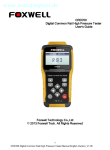
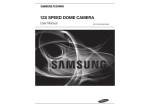
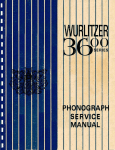

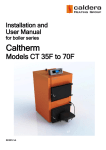


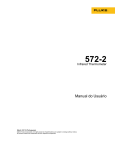
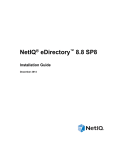

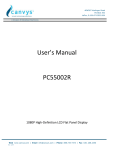
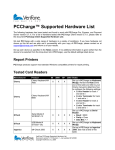



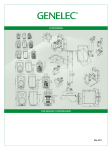

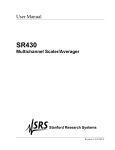
![UFM-30CTL Operation manual[PDF:4.1MB] - FOR](http://vs1.manualzilla.com/store/data/005676883_1-d2048345a5eb1a6d8c39e09dd604009b-150x150.png)